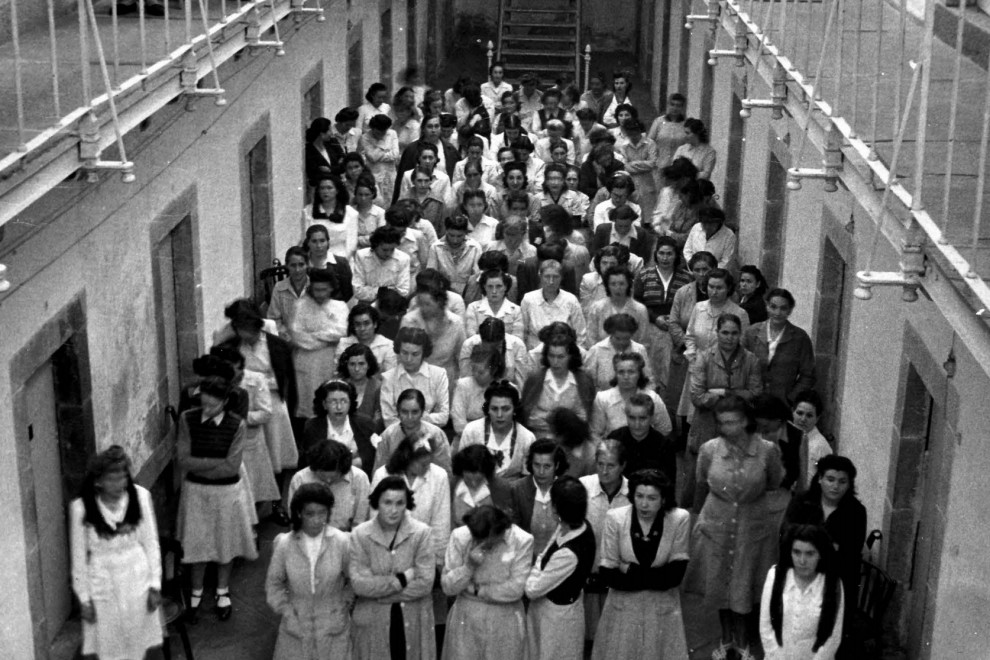Women like Tomasa Cuevas, Manolita del Arco, Juana Doña, Nieves Torres, María Salvo, Trinidad Gallego, Soledad Real, Leonor Estévez, Mari Carmen Cuesta, Carlota O'Neill, Concha Carretero, Maruja Borrell, Matilde Landa, Ángeles García-Madrid, Josefina Amalia Villa and many other women are part of a generation, that of the Second Republic and the Civil War, whose memory and history is only slowly beginning to be known. Also imprisoned and much better known, Las Trece Rosas are part of this plural group of well-known and anonymous post-war women fighters. A first generation of political prisoners of Franco's regime that is part of the "democratic substratum" of all those struggles, demands and conflicts that during the twentieth century in Spain challenged the dominant model of society. Young women who, linked to politics by the hand of the republican reforms, were punished for their audacity, the audacity to challenge fascism, but also a patriarchal society with secular roots, with long prison sentences and even death.
They can also be related to the best-known and outstanding politicians, among other aspects for their feminist ideology, in the context of the interwar period in Spain, such as Clara Campoamor, Dolores Ibárruri, Victoria Kent, Margarita Nelken or Federica Montseny; or the artists and writers of the Sin Sombrero group and the militia members of the International Brigades.

Women in Franco's prisons
Spain; c. 1939 — c. 1950
Period of activity: 1939 — 1950
Geographical classification: Europe > Spain
Socio-cultural movements
Late modern period / Contemporary period > Feminism
Late modern period / Contemporary period > Socio-political movements > Republicanism
Late modern period / Contemporary period > Socio-political movements > Labor movement
Historical milestones > Spanish Civil War
Groups by dedication
Rulers > Politicians
Women-at-arms > Guerrilla fighters
Activists > Feminists (activists)
Humanistics
Educators
Professionals / Other groups > Labourers
Context of feminine creation
Review
The women imprisoned during Franco's regime for having had any relationship with the Republican side in the Spanish Civil War were much more than prisoners related to the war, they were political prisoners who represented the model of women that Franco's dictatorship intended to exterminate: they had been full citizens and as such had defended their place in the world and democracy; and they would be an important part of the democratic substratum that throughout the dictatorship would fight for the return of democracy and the end of the dictatorship.
Justifications
Biography
We must bear in mind the double repression suffered by this generation: as Reds and as women. All this in a context marked by a totalitarian dictatorship, with clear elements of fascist influence during its first years, and fed by an archaic patriarchal and misogynist posture: the one that imposed a model of woman-wife-mother secluded in the home, marginalized from the public world, subjected to male authorities.
In this way, the life experiences of struggle, commitment and in many cases mere survival of the political prisoners of Franco's regime, both inside and outside the prison world, refer us, far from a heroic past, to a history of pain, sadness and fear [...].
In any case, it should not be overlooked how this first generation condemned for "war and post-war crimes" (made up of women imprisoned for their relationship with their male relatives, as well as militants of trade union and feminist organizations) has been veiled for too long. The testimonies of these militants are essential to explain Franco's repression.
Presas de Franco, Exhibition at the Universitat de València, 15/03/2022,
Works
Bibliography
- Presas de Franco, Exhibition at the Universitat de València, 15/03/2022,
- Heredia Urzaiz, Iván (2020) “Las presas de Franco. Mujeres republicanas encarceladas durante la Guerra Civil (1936-1939)” Librepensamiento, CGT, 15/03/2022, https://librepensamiento.org/wpcontent/uploads/2020/05/LP%20Nº%20101.pdf
- Chacón, Dulce (2002). La voz dormida. Madrid: Alfaguara.
Didactic approach
- In History of 4th ESO with the viewing of the film La voz dormida, the question can be dealt with in a very visual way and can be complemented from the subject of Spanish Language and Literature with the reading of the novel by Dulce Chacón on which the film is based.
- Other subjects that can be covered: History of Spain in the 2nd year of Bachillerato, History of the Contemporary World in the 1st year of Bachillerato and Universal Literature in the 1st year of Bachillerato.